Author: Jake Huolihan
For many, homebrewing is as much about making a tasty beverage as it is exploring and experimenting with interesting ingredients in the hopes of creating flavors not commonly found in commercial beer. Browse any homebrew forum and you’re bound to run across questions about whether or not certain edible items might have a place in beer, in fact magazines like Zymurgy and Brew Your Own regularly publish articles about the use of less traditional brewing ingredients. From various fruits, spices, and grains to odd-ball items like boxed cereal and, umm, unconventionally sourced microbes. You name it, someone has probably tried it, and I love that about homebrewing!
But I’m not one of those people. I like beer flavored beer and tend to stick to the standard ingredients– barley, hops, water, and yeast. When stylistically appropriate, I’ll branch out and use some other grain adjunct, maybe toss in a dusting of spice or orange peel, but for the most part, I keep it pretty simple.
It’s for this reason I initially rolled my eyes when, during his talk with fellow contributor Malcolm Frazer at Homebrew Con 2017, Brian Hall shared a NEIPA he brewed with oat milk in place of the more traditionally used flaked oats. However, my bemoaning was disrupted immediately after taking the first sip, the beer was delicious, possessing a unique smoothness I’d yet to experience in this hazy style. Was it a function of the unconventional ingredient? Only one way to find out!
| PURPOSE |
To evaluate the differences between a New England IPA made with flaked oats and one made with oat milk.
| METHODS |
I kept the recipe for this xBmt very simple in the hopes that any impact of the variable would stand out.
NOats Please, Gimme Milk
Recipe Details
| Batch Size | Boil Time | IBU | SRM | Est. OG | Est. FG | ABV |
|---|---|---|---|---|---|---|
| 6 gal | 60 min | 24.7 IBUs | 4.8 SRM | 1.058 | 1.014 | 5.8 % |
| Actuals | 1.058 | 1.012 | 6.0 % | |||
Fermentables
| Name | Amount | % |
|---|---|---|
| Pale Malt, Maris Otter | 11 lbs | 78.57 |
| Oats, Flaked | 3 lbs | 21.43 |
Hops
| Name | Amount | Time | Use | Form | Alpha % |
|---|---|---|---|---|---|
| Hallertau Magnum | 10 g | 60 min | Boil | Pellet | 11.5 |
| Mandarina Bavaria | 60 g | 2 min | Boil | Pellet | 8.5 |
| Motueka | 60 g | 2 min | Boil | Pellet | 7 |
| Amarillo | 45 g | 2 min | Boil | Pellet | 9.2 |
| Mandarina Bavaria | 60 g | 7 days | Dry Hop | Pellet | 8.5 |
| Motueka | 60 g | 7 days | Dry Hop | Pellet | 7 |
Yeast
| Name | Lab | Attenuation | Temperature |
|---|---|---|---|
| London Ale III (1318) | Wyeast Labs | 73% | 64°F - 74°F |
Notes
| Water Profile: Ca 174 | Mg 0 | Na 8 | SO4 150 | Cl 200 |
Download
| Download this recipe's BeerXML file |
I picked up 1 gallon/3.8 liters of oat milk and noted the nutrition label listed the sugar content as 304 grams. Since this sugar and volume of liquid would be present in the oat milk batch, I did a little finagling in BeerSmith and found that adding the entire gallon of oat milk to a 4 gallon batch with a grist of 100% Maris Otter would result in 5 gallons of wort that’s the same gravity as the one made with flaked oats.
A couple days ahead of time, I made a starter of Wyeast 1318 London Ale III yeast large enough to split between 2 batches.
The night before brewing, I collected the water for each batch and adjusted it to my desired profile. Since the specific mineral content of the oat milk was not provided, I added a proportionally similar amount of minerals to the oat milk batch at the same time I added the oat milk for between-batch consistency. The following morning began with the milling of grain.
I staggered the start of each mash by 20 minutes to make the day less hectic and, thanks to BeerSmith, hit my target mash temperature on both.
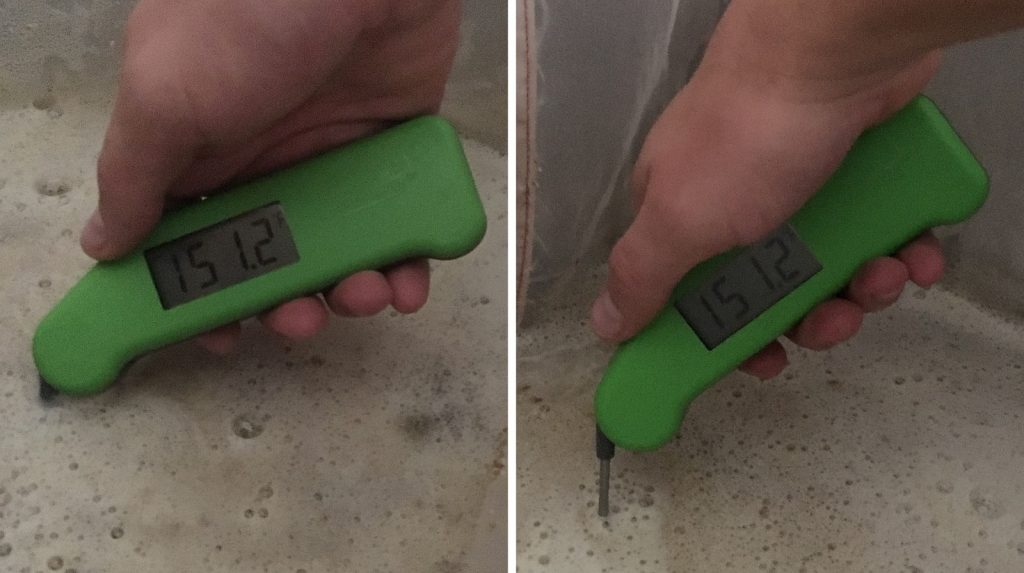
Once the mashes were complete, I removed the grains and allowed them to drip while until pre-boil volume was reached.

Each batch was boiled for 60 minutes with hops added per the recipe.
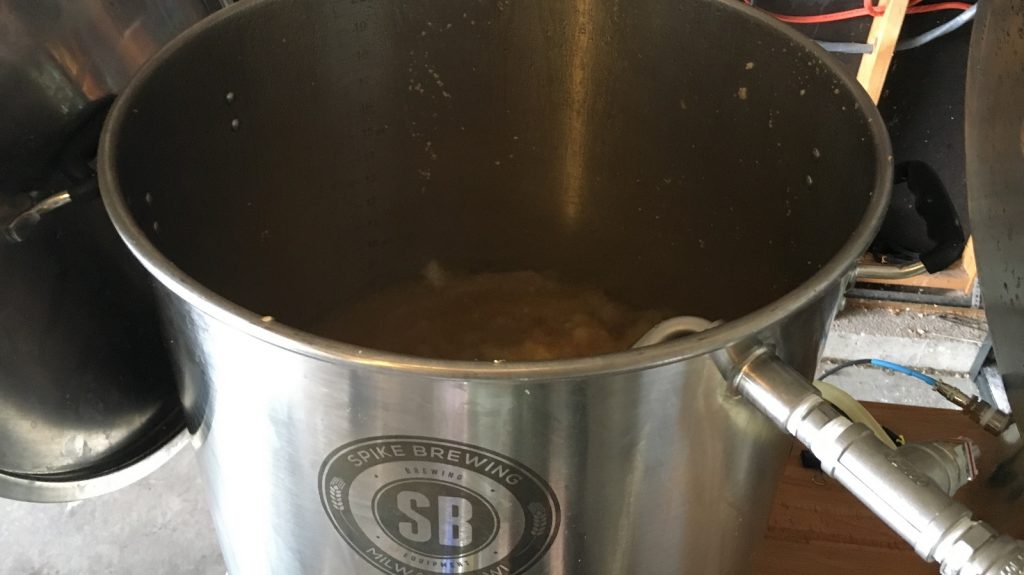
The oat milk and minerals were added to one batch at the same time as the final kettle hop addition.
Once the boils were complete, I ran the wort through my plate chiller directly into fermentors that were then placed in my fermentation chamber. Hydrometer measurements revealed my math had worked, both worts were at a very similar OG.
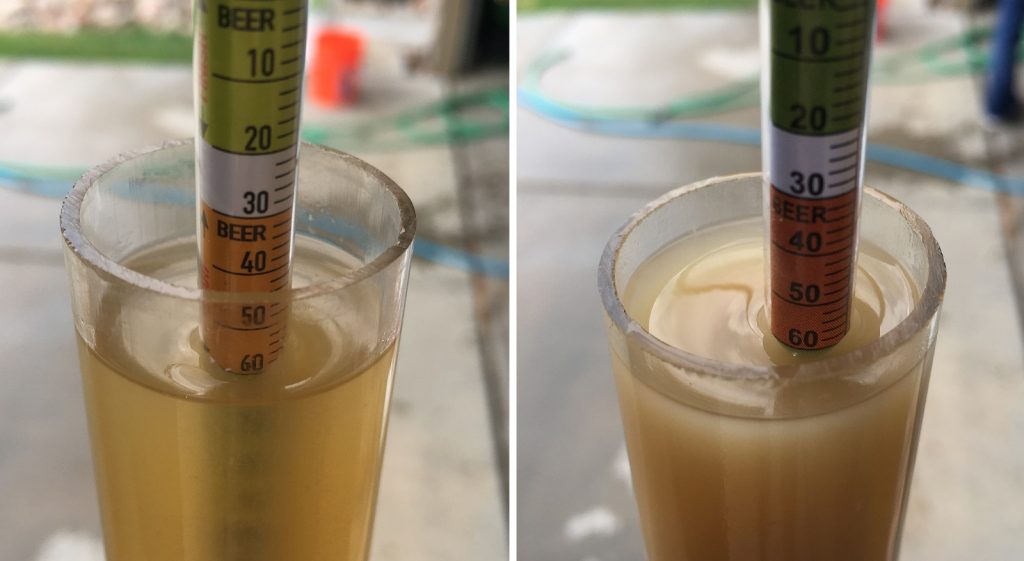
I noticed an immediate difference in appearance at this point.
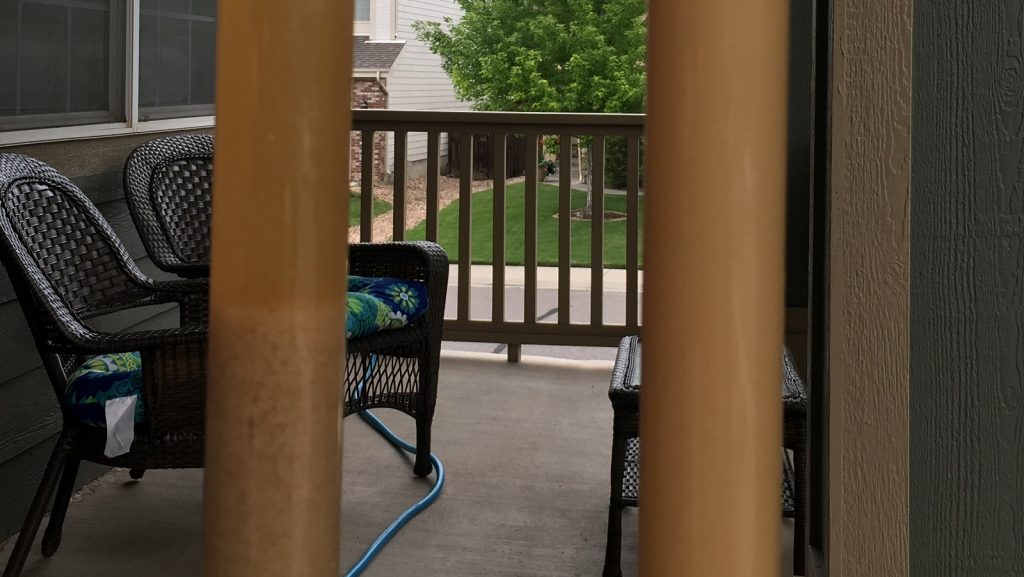
The worts were left in my chamber overnight to finish chilling to my desired fermentation temperature of 66°F/19°C. Once there, I split the yeast starter equally between the batches then hit both with a 90 second dose of pure oxygen. Fermentation was ripping along when I checked 24 hours later and on day 3, I added the large biontransformation dry hop charges to each.
Fermentation appeared to be slowing a few days later, so I began ramping the temperature up to 70°F/21°C. Hydrometer measurements a couple days later showed both beers had reached FG.

Skipping the gelatin fining process due to the style, I proceeded to keg the beers warm then move them to my cold keezer to cold crash in hopes of avoiding oxidation.
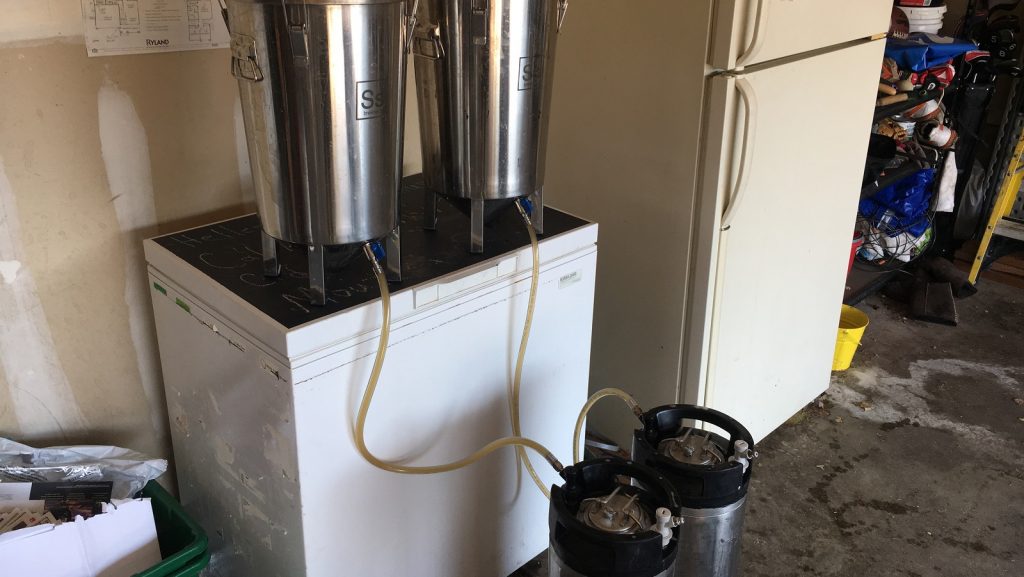
Curious how the beers tasted, I stole samples while kegging and noticed that while equally hazy, they didn’t necessarily look identical.
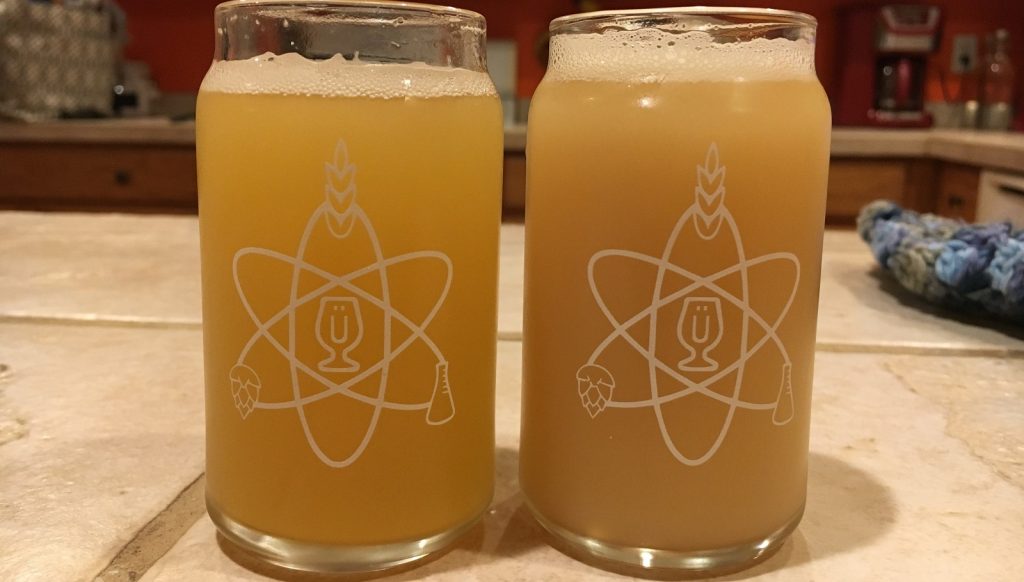
After a brief period of burst carbonation, I reduced the gas to serving pressure and let the beers condition another few days before serving to participants. After just a week in the keg, I was surprised with how different the beers looked.
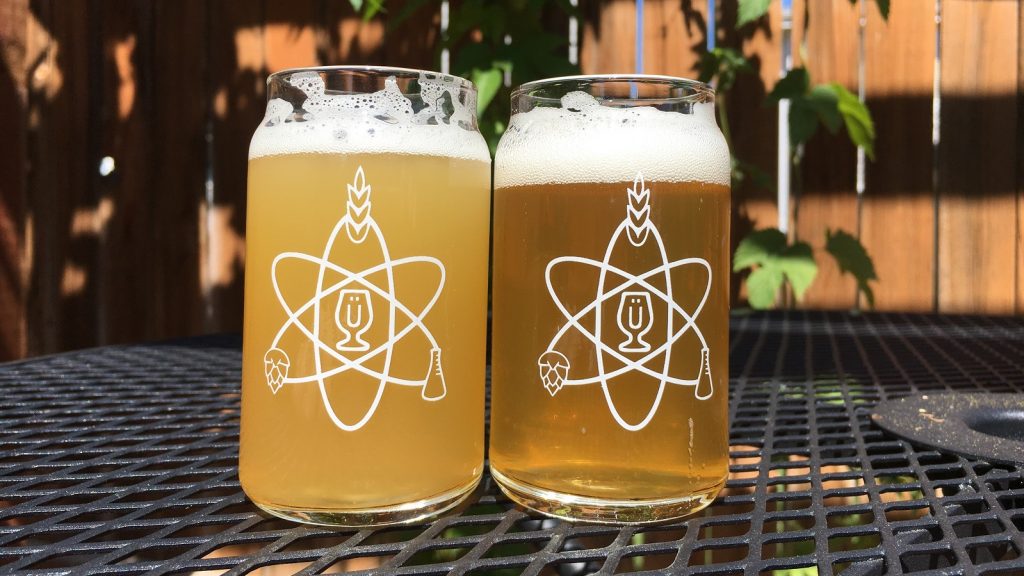
| RESULTS |
A panel of 28 people with varying degrees of experience participated in this xBmt. Each taster, blind to the variable being investigated, was served 1 sample of the NEIPA made with flaked oats and 2 samples of the NEIPA made with oat milk in different colored opaque cups then instructed to select the unique sample. While 15 (p<0.05) correct selections would have been required to achieve statistical significance, a total of 18 tasters (p=0.0008) accurately identified the unique sample, which indicates tasters were able to reliably distinguish a NEIPA made with flaked oats from one made with oat milk.
The participants who correctly selected the unique sample in the triangle test were instructed to complete a brief set of additional questions comparing only the two different beers, still blind to the nature of the xBmt. Of the 18 correct tasters, 13 chose the flaked oats beer as their most preferred, 4 liked the oat milk beer more, and 1 reported perceiving no difference between the beers.
My Impressions: I performed multiple semi-blind triangle tests and identifying the unique sample was not at all difficult. The oat milk beer had a flavor reminiscent of, unsurprisingly, oat milk. Based on the fact earlier pours were murky while later pours cleared up, I have to assume the oat milk slowly dropped to the bottom of the keg. Both beers were very good, and the oat milk beer did have a great mouthfeel at first, but my ultimate preference was for the flaked oats version, as it maintained a fresher flavor much longer.
| DISCUSSION |
I’m not sure where the idea of using oat milk instead of flaked oats came from, though according to Ales Of The Riverwards blogger Ed Coffey, there are apparently some commercial breweries who have done this with their NEIPA. Given my experience with Brian’s oat milk NEIPA at Homebrew Con, I admittedly expected this xBmt would support its use as a way to impart both classic haze and that silky smooth mouthfeel. The fact flaked oats and oat milk are different ingredients, I wasn’t too surprised the xBmt beers weren’t similar enough in character to be indistinguishable to participants. It was the preference data showing a large portion of those who were correct on the triangle test preferred the flaked oats beer that got me, as blind preference ratings usually tend to be split fairly evenly. While it’d be easy to presume the oat milk beer was bad, there’s really no good way of knowing exactly how much more each taster preferred one beer over the other, and I personally thought both samples were quite good despite perceiving them as different.
One observation that struck me as having a potential impact on these xBmt results was the more rapid clarification of the oat milk beer, which I can only assume was due to the milk falling out of solution. For the first few days, that beer was certainly more reminiscent of Brian’s, soft and smooth, though at just a week in the keg, its appearance began to change. It seems possible a comparison done a couple days after kegging, when both beers were similarly murky, would have led to different results. Regardless, since I don’t consume a full keg in 2 to 3 days, I’ll be sticking with flaked oats for my NEIPA, as it maintained the qualities I expect for much longer than oat milk.
If you have thoughts about this xBmt, please feel free to share in the comments section below!
Support Brülosophy In Style!
All designs are available in various colors and sizes on Amazon!
Follow Brülosophy on:
FACEBOOK | TWITTER | INSTAGRAM
If you enjoy this stuff and feel compelled to support Brulosophy.com, please check out the Support Us page for details on how you can very easily do so. Thanks!


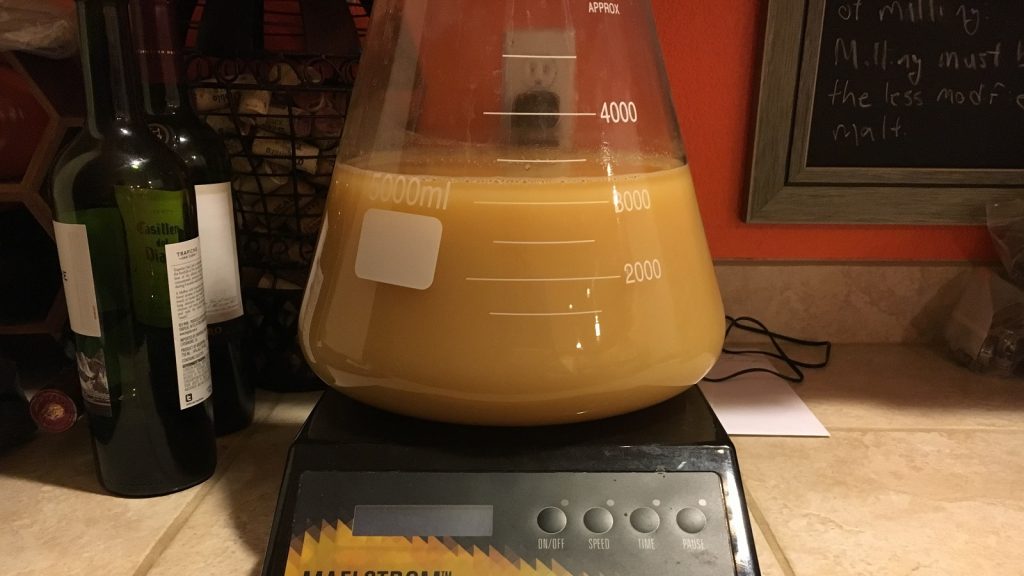

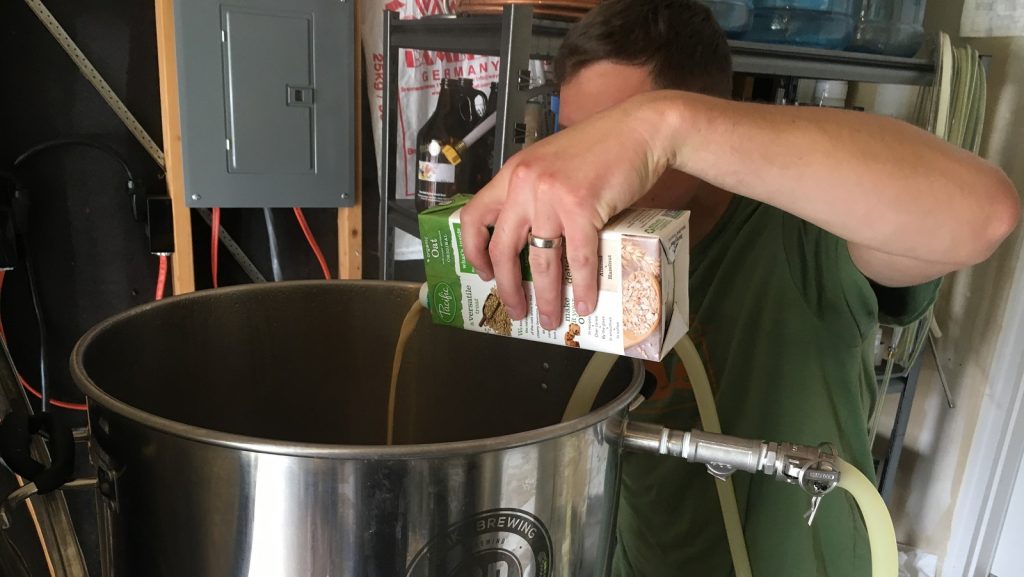
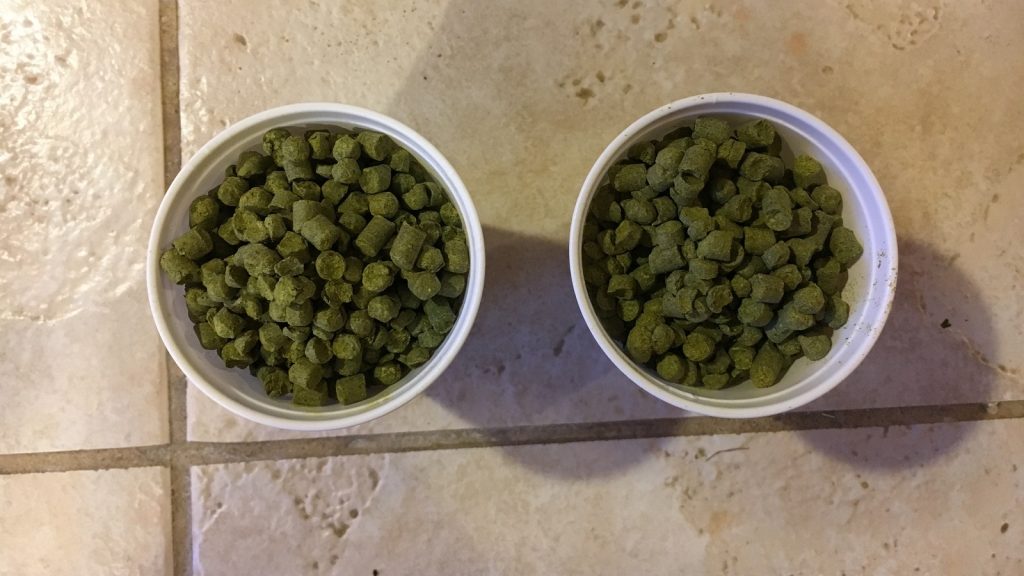










23 thoughts on “exBEERiment | Flaked Oats vs. Oat Milk in Hazy IPA”
I wonder if the results would’ve been different had you added the oat milk to your mash to let the barley enzymes chew on it.
Had the same thought since I was thinking that there is starch in the oat milk (iodine test on the milk/finished beer?). Did Malcolm also add the milk during the boil?
This was my thought exactly and something I’m going to try on an upcoming batch.
How do you milk an oat? Also, side note, how do you milk an almond?
On a serious note, if I understand this correctly, for NEIPA’s you create a basic water, with enough minerals/acid, etc. to hit your mash pH. Then you add additional minerals to match a typical NEIPA profile prior to the boil?
I create my mineral profile based off of target ppm, then adjust pH with acid
I guess I’m confused on this part:
“Since the specific mineral content of the oat milk was not provided, I added a proportionally similar amount of minerals to the oat milk batch at the same time I added the oat milk for between-batch consistency.”
So this is just to account for the volume of liquid in the oat milk?
Also, some research on oat milk (Slow work day). Soak oats in water, blend, strain. So it does seem like the mash could be behind the difference.
Correct, it was just to account for mineral content of the volume. The pH for the milk beer was adjusted to mash at the same pH as the flaked oats beers. Minerals were added to the milk to make it “the same” content as the water.
Assuming the process is the same for both…
Almonds
– You soak the almonds over night or for an extended period of time.
– Peel the brown stuff off the almond.
– Then return it to the liquid and add to the blender.
– Pour liquid in vessel and use cheese cloth to squeeze the remaining liquid from the almonds. – – Then you can either use the nut residue for flour or throw it away.
The final product in very thin. The store bought brands have thickeners like carrageenan or others so it has the consistancey of milk. Plus added sugars and other chemicals.
I assume much of that process is the same for oat milk.
Also, quick question about cold crashing in the keg. How much beer did you end up pouring off until you were no longer sucking out yeast and dry hops? This actually seems like a pretty good solution as the only real detriment is having some sediment in the keg.
My dip tubes are modified so I really don’t pull up much sediment. Using the brew buckets really allows you to leave most of that behind as I’ll position my dip tube at 45* which is above the yeast/trub layer
When you say you modified your keg dip tube, I’m assuming you cut it a little. How high above the bottom do you have yours cut? Mine are all the style that angle towards the middle.
Appreciate the feedback!
No, I didn’t cut them though some do. Mine are bent like an S so when inserted it basically sits at the seam between the side and bottom of the corny
cutting off like 1/2″-1″ is a great solution to eliminate junk from the bottom of the keg. You can use an ordinary copper tubing cutting tool. Works great with a smooth edge. Hacksaw can work in a pinch, just make sure to file of edges so you don’t slice yourself at some point.
i assume the guy you talked to about using oat milk also added it to the boil, not the mash? i’m wondering if oat malt isnt best to get oat flavor?
Just flip the keg a few times to resuspend. Redistributing whatever is causing the haze tends to re-up the mouthfeel, aroma, and flavors of these beers in my experience.
If you go direct to keg without cold crashing are you shortening your dip tube? If so how far off the bottom?
If the P values are correct, then you must have had 28 participants. For 23, you would have only needed 12 correct selections to reach significance at 95% confidence. Regardless, great choice of xbmt. I’ve been intrigued by this since reading Ed’s post back in June.
Good catch, not sure how I missed that. 28 participants, 18 correct selections, p=.0008.
Doesn’t oat milk contain oil. Usually 6%
I’m sure it does contain some oil, did not notice any negative effect on head though interestingly enough
sunflower oil to be exact.
Its an interesting idea.
I wouldn’t necessarily call it a different ingredient, just processed slightly differently.
even so, I note that the oat milk used has “salt” in it and some “phosphates” as well. I wonder if this would affect the clarity of the beer, possibly assisting in the dropping of oatmilk paticles??
On a side note, I’ve been toying with the idea of using Oat milk in an oatmeal stout. Would make an interesting comparison also……..
I add either oat milk or coconut milk (depending on style) to the mash prior to sparge for NEIPA (using Kveik) and Pastry Stouts. The body and the haze lasts for weeks in the finished product.